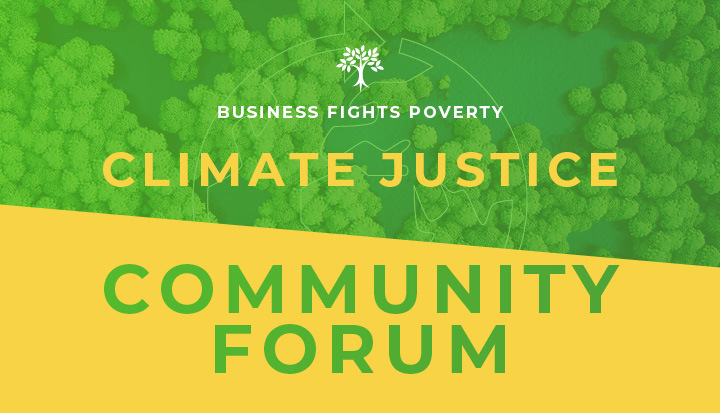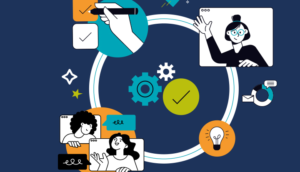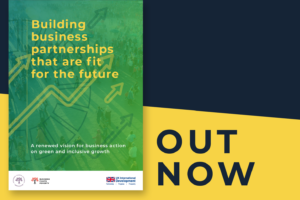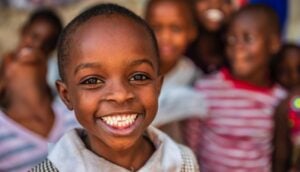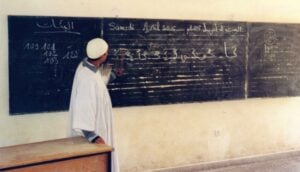Interview with Dr. Huma Abbasi, General Manager, Global Health and Medical, Chevron, and Mark Viso, President and CEO, Pact
December 1, 2016 marked the 28th World AIDS Day – observed to commemorate those who have struggled with the disease and those who continue to fight against it. Despite huge advances toward ending the HIV/AIDS epidemic, 39 million people today are living with HIV/AIDS, and nearly 60 percent of them remain without access to antiretroviral therapy. Dr. Huma Abbasi, general manager, global health and medical at Chevron, and Mark Viso, president and CEO at Pact, share reflections from more than 13 years of cross-sector partnership to support community-based health initiatives tackling HIV/AIDS.
How long have Pact and Chevron worked together, and how did that partnership come about?
HA: Pact and Chevron have worked together since 2003, supporting local and community-based health initiatives where Chevron operates. Our partnership started with a program in Myanmar that empowers communities to adopt behaviors to improve their health status and increases access to livelihood opportunities, in addition to focusing on reducing diseases such as tuberculosis, HIV and malaria. This program has now reached more than 1.2 million people across nearly 1,500 villages and trained more than 10,600 community health volunteers.
MV: When our partnership was formed we were both looking for a collaborator that would help complement each other’s strengths. Pact was able to bring its unique skills in local and community-based health initiatives, while Chevron helped to convene partners in the broader community and brought its own experience in tackling HIV and other diseases among its workforce.
Within the fight against AIDS, what specifically have Chevron and Pact worked together to address? What have you learned from these past programs?
HA: In addition to the program in Myanmar, Chevron and Pact have been partnering on a program in the Niger Delta to provide HIV/AIDS education, testing and counseling to prevent the mother-to-child transmission (PMTCT) of HIV. Nigeria shoulders roughly a quarter of the world’s cases of mother-to-child transmission of HIV. And the Delta is a key footprint for the company – our opportunity for impact was significant.
MV: Together, we helped to train community health workers and community-based organizations that could go out into their own communities to share PMTCT techniques and approaches. Many of the women we are serving in these areas aren’t aware of their own HIV status, and are discouraged from getting treatment or care because of the stigma associated with the disease. Furthermore, if they are pregnant, they are often unaware of the steps you can take to prevent passing HIV to the child. By reaching them through peers in their community, these women are encouraged and empowered to learn and access the care they need.
Why have you chosen to focus on women?
MV: We know that women are powerful. We have seen that when women have the means to provide for their families, the evidence shows that they use those resources for good, driving improvements in education, health, nutrition and harmony – and not just for the women and their families, but also for their local and sometimes regional communities. In many countries around the globe, women are disproportionately affected by HIV/AIDS. Women account for more than half of all people living with HIV, and almost 62 percent of all new HIV infections are in young women. Women are also uniquely positioned to further gains in health, livelihoods and development. As is borne out time and time again, efforts to improve everything from financial empowerment to health to education are more successful when women are prioritized. Women further economic and education gains by supporting their children and reinvesting in their communities.
Chevron and Pact recently launched a new program that extends the work they have done together in the Niger Delta. Can you tell us more about that program?
HA: Our initial PMTCT programs in Nigeria have had significant successes: Since 2012, our PMTCT messaging has reached more than 290,000 people; and nearly 54,000 pregnant women have taken HIV tests, received their results and been counselled at health facilities. Building on momentum from this impact, we’ve worked to identify how else we can support health access and uptake of PMTCT awareness and services.
Through our collaborative work with Pact, we identified the need to also provide essential “wrap-around services” that counter the effects of poverty for the most high-needs populations still very much threatened by AIDS. In this next phase of the project, our work has expanded to offer support for community and women-led savings-and-loan groups and financial education, in addition to health services.
Why have you begun to focus on “wrap-around” services – such as financial empowerment or education – in addressing HIV/AIDS? Why is this important?
MV: Our experience has shown that in working to change the health of a community, it’s not just about healthcare. This may feel counterintuitive, but women are actually more likely to engage in health delivery and learn about their own health when they also are educated or financially independent. In this new PMTCT program, we are employing Pact’s empowerment, savings and literacy program called WORTH. The program provides financial education and community-led savings groups as one way of improving the livelihoods of women. By pulling this lever, we can see the whole system shift. It improves not just their financial acumen and independence, but also helps them seek out and better utilize health services.
Can you share with us any lessons learned from working with and serving isolated and remote populations? And often overlooked populations, such as women?
HA: Delivering health care in the Niger Delta is a challenge not just because of the lack of capacity and infrastructure but also because of the difficulties of moving people and goods in a rural, flood-prone area. These geographic challenges are exacerbated when trying to engage an often overlooked demographic, such as women. As such, the community model that we employ becomes very important. By working with community organizations and health workers, we are better able to access those in need and deploy information throughout the region. The community model also serves to embed knowledge, create capacity and build local ownership.
What role do you think other companies can play – in partnership with NGOs and other organizations – to improve health and livelihoods in sub-Saharan Africa? What advice would you offer to others looking to work in similar partnerships?
HA: Companies have the opportunity to improve livelihoods and support communities where they operate, not just through health programs, but also by providing education, job training or skills development. They also can bring others to the table. By demonstrating leadership on what they choose to tackle, they can be a force in convening a local and international network. Business has a powerful and important role to play – and has much to gain from doing so.
MV: I would advise that partners working together align on shared interests and common goals. While there may be divergent priorities, it’s when common understanding takes precedence that change can be achieved.



